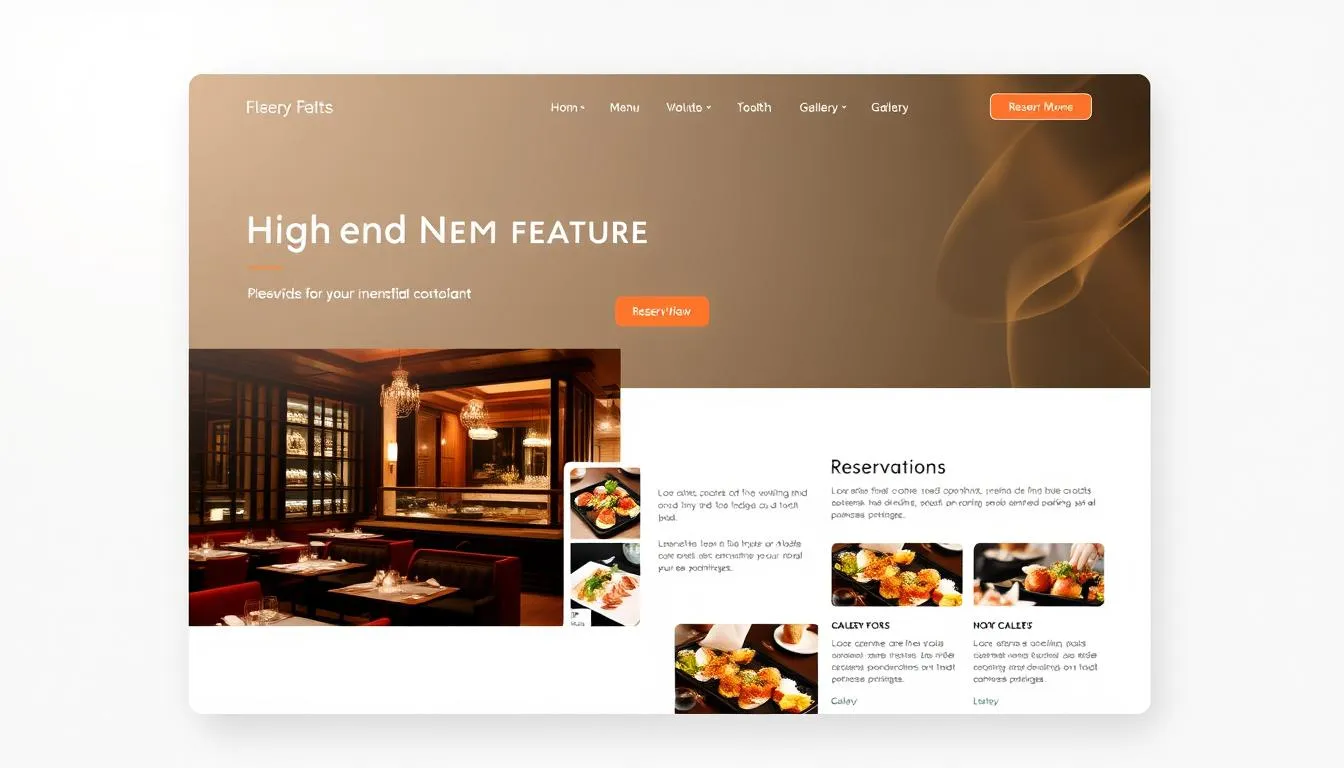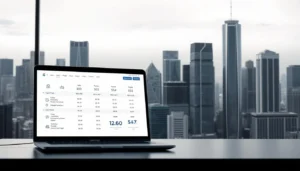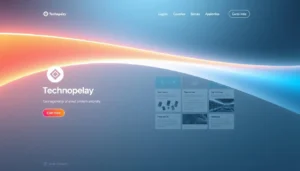Last Updated on: June 19, 2025
In today’s digital landscape, a restaurant website is crucial for attracting customers and driving sales. It’s no longer a luxury, but a necessity.
A well-designed website serves as the digital equivalent of a welcoming host, making visitors feel at home and eager to explore your menu and services. It enhances your online presence and provides a seamless user experience.
To create an effective restaurant website, incorporating essential features is vital. These features help showcase your culinary offerings and build a loyal customer base.
Key Takeaways
- A user-friendly interface is crucial for a restaurant website.
- Online ordering and reservation systems enhance customer experience.
- High-quality food images showcase your culinary offerings.
- Customer reviews and ratings build credibility.
- A clear and concise menu is essential for customer convenience.
The Digital Storefront: Why Your Restaurant Needs an Effective Website
Your restaurant’s website is often the first point of contact with potential diners, serving as a digital ambassador for your brand. In today’s digital landscape, having an effective online presence is crucial for attracting and retaining customers. A well-designed website not only showcases your menu and ambiance but also provides a seamless user experience that can make or break a diner’s decision to visit your restaurant.
A strong online presence can significantly impact restaurant success. It’s not just about being visible; it’s about creating an engaging experience that drives sales and builds customer loyalty. By understanding diner behavior and preferences, you can tailor your website to meet their needs, thereby enhancing their overall experience.
The Impact of Online Presence on Restaurant Success
The success of a restaurant is heavily influenced by its online presence. Studies have shown that a significant majority of consumers research restaurants online before making a decision. A Toast study found that 75% of diners visit a restaurant’s website before deciding where to eat. This highlights the importance of having a website that is not only visually appealing but also user-friendly and informative. By investing in a robust online presence, restaurants can increase their visibility, attract more customers, and ultimately drive sales.
Key Statistics on How Diners Use Restaurant Websites
Understanding how diners interact with restaurant websites is crucial for optimizing your online presence. Key statistics reveal that diners primarily use restaurant websites to view menus, check hours of operation, and make reservations. By incorporating features that cater to these needs, such as online ordering systems and reservation tools, restaurants can significantly enhance the user experience. Moreover, ensuring that your website is mobile-responsive is critical, as a considerable portion of diners access restaurant websites through their mobile devices.
Mobile Responsiveness: Designing for On-the-Go Customers
The rise of mobile device usage has transformed how customers interact with restaurants, making a mobile-friendly website indispensable. As customers increasingly use their smartphones to search for dining options, restaurants must ensure their websites are optimized for mobile to capture this audience.
Why Mobile-First Design Matters for Restaurants
Adopting a mobile-first design approach ensures that your restaurant’s website is optimized for the smallest screens first, providing a better user experience for the majority of your customers who are searching on mobile devices. This approach simplifies navigation, improves load times, and ensures that key information is readily accessible.
Key benefits include:
- Increased customer engagement
- Improved conversion rates
- Better search engine rankings due to Google’s mobile-first indexing
Essential Mobile Features for Restaurant Websites
To cater to on-the-go customers, restaurant websites should include several essential mobile features. These include:
Testing Your Website’s Mobile Performance
To ensure your website performs well on mobile devices, it’s crucial to test its mobile responsiveness regularly. Tools like Google’s Mobile-Friendly Test can identify areas for improvement, such as font sizes, button spacing, and page loading speed.
“A mobile-friendly website is not just about aesthetics; it’s about providing a seamless user experience that drives engagement and conversions.” –
Industry Expert
Online Ordering and Reservation Systems
In today’s digital age, integrating online ordering and reservation systems into your restaurant’s website is no longer a luxury, but a necessity. These features allow customers to order food and make reservations online, making it easier for them to interact with your restaurant.
Implementing an online ordering system can significantly boost sales and improve customer satisfaction. It provides a convenient way for customers to browse your menu and place orders at their own pace. Moreover, it reduces the likelihood of errors and allows your staff to focus on food preparation rather than taking orders over the phone.
Direct Ordering vs. Third-Party Integration
When it comes to online ordering, restaurants have two primary options: direct ordering through their website or integrating with third-party delivery services. Direct ordering gives you more control over the customer experience and can reduce commission fees. On the other hand, third-party integration can expand your reach to a broader audience.
It’s essential to weigh the pros and cons of each approach. Some restaurants opt for a hybrid model, offering both direct ordering and third-party delivery options to cater to different customer preferences.
Reservation Widgets and Booking Tools
Reservation widgets and booking tools are another crucial feature for restaurants. They allow customers to book tables online, reducing the need for phone calls and potentially increasing the number of reservations. These tools can be customized to fit your restaurant’s layout and availability.
By integrating reservation widgets, you can also gather valuable data on customer preferences and dining habits, helping you to optimize your service and marketing strategies.
Payment Processing Options
To fully leverage online ordering and reservation systems, you need to offer secure and convenient payment processing options. This includes integrating various payment gateways into your website, such as credit card processors and digital wallets.
Ensuring that your payment processing is seamless and secure will enhance the overall customer experience and build trust in your brand.
Menu Presentation: Showcasing Your Culinary Offerings
The digital menu is a vital component of a restaurant’s online presence, serving as a visual appetizer for potential customers. An effective menu presentation can significantly influence a diner’s decision to visit your restaurant.
Digital Menu Best Practices
To create an engaging digital menu, consider the following best practices:
- Use clear categorization and headings to help customers navigate your menu.
- Include high-quality images of your dishes to showcase your culinary offerings.
- Provide detailed descriptions of each dish, including ingredients and pricing.
Food Photography Tips for Menus
High-quality food photography is crucial for making your dishes appealing online. Here are some tips:
- Use good lighting to capture the true colors and textures of your dishes.
- Style your dishes attractively, considering the background and garnishes.
- Invest in professional photography or learn the basics of food photography.
Special Dietary Information and Allergen Labeling
Providing special dietary information and allergen labeling is not only a courtesy to your customers but also a legal requirement in many jurisdictions. Consider the following:
By implementing these strategies, you can enhance your menu presentation, making it more appealing and informative for your customers.
Location and Contact Information: Making It Easy to Find You
For customers to become regulars, they first need to be able to find you, making location and contact information vital. A restaurant’s website is often the first point of contact for potential diners, and ensuring that this information is readily available is crucial for driving foot traffic and increasing sales.
Interactive Maps and Directions
Incorporating interactive maps on your website can significantly enhance user experience. It allows customers to get directions easily, understand your location relative to theirs, and even check for traffic. Google Maps integration is a popular choice, providing a seamless experience for users.
- Simplifies navigation for customers
- Enhances user experience with interactive features
- Can be integrated with most website platforms
Contact Forms vs. Direct Contact Information
Deciding between using contact forms or displaying direct contact information depends on your restaurant’s specific needs. Contact forms can help manage inquiries and reduce spam, while direct contact information provides immediate accessibility.
“The way to get started is to quit talking and begin doing.” – Walt Disney
Hours of Operation Display
Clearly displaying your hours of operation is essential to avoid frustrating potential customers. Consider including a notice for any special hours or holiday closures. This transparency helps manage customer expectations and can reduce phone inquiries.
What Are the Essential Features of a Restaurant Website? A Comprehensive Checklist
To stand out in the crowded restaurant industry, your website must include key elements that enhance user experience and encourage conversions. A comprehensive restaurant website is not just about aesthetics; it’s about creating a digital storefront that effectively showcases your offerings, engages potential customers, and drives sales.
Must-Have Technical Elements
A robust restaurant website requires several technical elements to function effectively. These include:
- SSL Certificate: Ensures a secure browsing experience for your customers.
- Responsive Design: Adapts to various screen sizes and devices, providing a seamless user experience.
- Fast Loading Speed: Critical for retaining visitors and improving search engine rankings.
- Easy Navigation: Intuitive menus and clear calls-to-action help visitors find what they’re looking for quickly.
Content Requirements for Restaurant Success
Compelling content is crucial for engaging your audience and differentiating your restaurant. Key content elements include:
- High-Quality Food Photography: Showcases your dishes in the best light.
- Detailed Menu Information: Includes pricing, ingredients, and nutritional information.
- Clear Contact Information and Location: Makes it easy for customers to find and contact you.
Features That Convert Visitors to Diners
To turn website visitors into customers, incorporate features that facilitate bookings, orders, and interactions. These features include:
- Online Reservation System: Allows customers to book tables easily.
- Online Ordering and Delivery Integration: Streamlines the ordering process for takeout and delivery.
- Customer Reviews and Ratings: Builds credibility and helps potential customers make informed decisions.
By incorporating these essential features, technical elements, and content requirements, you can create a restaurant website that not only attracts visitors but also converts them into loyal customers.
Visual Storytelling: Photo Galleries and Virtual Tours
The power of visual storytelling lies in its ability to transport diners into the heart of the restaurant, making them feel the atmosphere and taste the cuisine. In today’s digital landscape, a compelling visual narrative can significantly influence a customer’s decision to dine at a particular establishment.
Showcasing Your Space and Atmosphere
A well-designed photo gallery can effectively showcase a restaurant’s unique ambiance, from the décor to the bustling atmosphere. This visual showcase helps potential customers envision themselves dining there, making the experience more tangible and appealing.
Key elements to include in your photo gallery are images of the dining area, bar, outdoor seating, and special features like private dining rooms or unique architectural details.
Food Photography Best Practices
Food photography is an art that can make or break a restaurant’s visual appeal. High-quality images of dishes, prepared with care and styled attractively, can stimulate appetite and increase the desire to try the cuisine.
“The way you present your food can be just as important as the taste.” – Celebrity Chef
Video Content and Virtual Tours
Video content and virtual tours offer an immersive experience, allowing potential diners to explore the restaurant remotely. This can include a tour of the facilities, a behind-the-scenes look at the kitchen, or interviews with the chefs.
By incorporating these visual storytelling elements, restaurants can create an engaging online presence that attracts and retains customers.
Local SEO and Search Visibility for Restaurants
Effective local SEO is key to ensuring that your restaurant appears in relevant search results. By optimizing your online presence for local search, you can attract more customers and drive foot traffic to your establishment.
One of the foundational elements of local SEO is Google Business Profile optimization. Claiming and optimizing your Google Business Profile can significantly improve your restaurant’s visibility in local search results. This includes providing accurate and up-to-date information about your business, such as your address, phone number, and hours of operation.
Google Business Profile Optimization
To optimize your Google Business Profile, start by claiming your listing and verifying your business. Then, ensure that your profile is complete with accurate information, high-quality photos, and engaging posts that highlight your restaurant’s unique offerings.
Local Keywords and Content Strategy
Developing a content strategy that incorporates local keywords can help your restaurant’s website rank higher in search engine results. This involves using keywords related to your location and cuisine in your website’s content, meta tags, and alt tags.
Online Directories and Citation Management
Listing your restaurant in online directories and managing citations is another crucial aspect of local SEO. Ensure that your business is listed in relevant directories and that your information is consistent across all listings. This helps search engines trust your business’s online presence and can improve your visibility in local search results.
By focusing on these local SEO strategies, restaurants can enhance their online visibility, attract more customers, and ultimately drive more sales.
Additional Features That Enhance Customer Experience
To further elevate the dining experience, restaurants can incorporate several key features into their website. These features not only improve customer satisfaction but also drive sales and loyalty.
Event Booking and Private Dining Information
Offering event booking and private dining information on your website can significantly enhance the customer experience. This feature allows customers to plan and book events easily, increasing the likelihood of hosting events at your restaurant.
According to a survey, restaurants that offer private dining spaces see an increase in revenue from events. By providing detailed information about these spaces, including capacity, amenities, and contact information for event planning, you can attract more customers looking to host events.
Gift Cards and Loyalty Programs
Gift cards and loyalty programs are excellent ways to increase customer loyalty and drive repeat business. By integrating these features into your website, you make it convenient for customers to purchase gift cards and track their loyalty rewards.
A study found that customers who participate in loyalty programs are more likely to return to a restaurant. By offering digital gift cards and loyalty programs, you can enhance the customer experience and encourage repeat visits.
Accessibility Considerations for All Diners
Ensuring your website is accessible to all diners, including those with disabilities, is crucial. This includes following web accessibility guidelines and providing information about physical accessibility at your restaurant.
“Accessibility is not just a legal requirement; it’s a way to ensure that everyone can enjoy your restaurant, regardless of their abilities.”
By incorporating accessibility features into your website, you demonstrate a commitment to inclusivity and customer care, enhancing the overall customer experience.
Conclusion: Building a Website That Serves Your Restaurant’s Needs
A well-designed restaurant website is crucial for attracting customers, increasing online presence, and driving sales. By incorporating essential features, you can create a seamless customer experience that sets your restaurant up for success.
Investing in a website that effectively showcases your culinary offerings, provides easy online ordering and reservation systems, and ensures mobile responsiveness can significantly improve customer satisfaction. For instance, a restaurant that optimizes its Google Business Profile and utilizes local SEO strategies can increase its visibility in search results.
By focusing on the key elements outlined in this article, you can develop a restaurant website that not only attracts new customers but also retains existing ones, ultimately driving business growth and revenue.
FAQ
What are the must-have features for a restaurant website?
A restaurant website should have a mobile-responsive design, online ordering and reservation systems, menu presentation, location and contact information, and visual storytelling elements such as photo galleries and virtual tours.
Why is mobile responsiveness important for restaurant websites?
With the majority of online searches conducted on mobile devices, a mobile-responsive website ensures that customers can easily access your menu, make reservations, and contact you on-the-go.
How can I improve my restaurant's online visibility?
Optimizing your Google Business Profile, using local keywords and content strategy, and managing online directories and citations can improve your restaurant’s visibility in local search results.
What are the benefits of online ordering and reservation systems?
Online ordering and reservation systems allow customers to order food and make reservations online, making it easier for them to interact with your restaurant and increasing sales and customer satisfaction.
How can I showcase my restaurant's culinary offerings on my website?
Using high-quality food images, digital menu best practices, and special dietary information and allergen labeling can make your dishes look appetizing and increase customer appetite.
What are the essential technical elements for a restaurant website?
Must-have technical elements include a secure payment gateway, SSL encryption, and easy-to-use content management systems.
How can I make it easy for customers to find my restaurant?
Displaying accurate location and contact information, using interactive maps and directions, and showing hours of operation can make it easy for customers to find and visit your restaurant.
What is the importance of visual storytelling on a restaurant website?
Visual storytelling elements such as photo galleries and virtual tours can give customers a glimpse into your restaurant’s atmosphere and cuisine, making it more appealing and increasing customer appetite.
How can I enhance the customer experience on my restaurant's website?
Additional features such as event booking and private dining information, gift cards and loyalty programs, and accessibility considerations can create a more engaging and user-friendly website that meets the needs of your customers.




